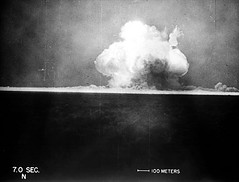Is eighteen too young? Was I too young, at eighteen, to hear
Winterreise for the first time? It is a bitter and emotionally barren

journey, a cold, solitary walk and a hopeless obsession over a love--a life--gone awry. This is no leisurely Sunday loop through the hills but a final trek, resignedly one-way. Schubert's setting of Wilhelm Müller's poetry is impossibly wise beyond its years, too
knowing for one who has just begun a wildly impetuous first semester at college. And at the time, my experience of German lieder bordered on the virginal.
At the concert, a professor nervously asked me about the translations she had madly typed and photo-copied at the last minute: had I read them, were there any glaring errors, could I follow the texts and still enjoy the singing? Rather dumbly, or simply, I said, "Oh, I didn't even look at the translations. Do I need to? I can understand every word he is singing." The professor seemed surprised, "I had no idea you spoke German!" I do not, but that singer performed a story that needed no translation. For a few hours, I felt that I'd always known German.
Ah, eighteen. I blame it on eighteen that I can not for the life of me summon up that baritone's name, even if he remains one of my highest ranking musical memories. He held my hand, with sincerity, and escorted me directly into the musical and poetic world. I felt the snowflakes, the icy chill, and the heaviness of a broken heart. I dreamed nostalgically when we stopped at the
linden tree, and though I wanted to run away from
the hurdy-gurdy man, I followed his mesmerizing tune towards the inevitable. To extend this sort of tag-along invitation is risky: many performers, driven by ill-conceived motives, would come across as pandering. But that baritone...that
Winterreise...well, he was pretty special. I quickly learned not to compare other performances to one unforgettable afternoon in
Smith Auditorium.
Last week, however,
Asha Bhosle contested that memory.
On their most recent release,
You've Stolen My Heart, Kronos Quartet teams up with
Asha Bhosle for a fun romp through Bollywood. The performance at Yerba Buena, not surprisingly, was a far cry from the formality of a German art song recital: Bhosle and first violinist David Harrington constantly "broke character" and provided some casual commentary, with Asha half-heartedly worrying about the "difficulty" of each successive song and Harrington almost beside himself with boyish admiration.

When she began to sing, however, Bhosle dropped all of her self-effacing pretense. She
owns those songs and is still fearless enough to get right up on top of her vocal chords, to an uncomfortable place (by western classical music standards) that equals the raw emotion she pours into the music. Her fierce intensity, combined with the ease and fluidity of her performance (she has sung these tunes for decades, after all), is what steals hearts.
Just as I followed the baritone through Schubert's chilly landscape, I joined Asha in a (much warmer!) haze of smoke and sensuality. Do I know a word of Hindi? No, but I could easily groove along to the nostalgic hippie spirit of
Dum Maro Dum and
Light a Match. Transforming innocence into experience (whether of
Bollywood, a poetic nineteenth-century
winterreise, or the
rue Fürstenburg) often depends not so much on a pitch-perfect musical performance but on a performance that is an open invitation into the musical world. The perfomers in these two situations delighted in showing me--sharing with me--the musical terrain. Now, I do not necessarily expect the full personal treatment at every concert I attend: if that happened, it would cease to be special, and in some circumstances might even seem inappropriate. In an ensemble, for example, too many individual invitations could undermine the
whole of the performance. But memorably, and in their own distinct ways, the nameless baritone and Asha Bhosle both managed to steal my heart.
continue reading...
 journey, a cold, solitary walk and a hopeless obsession over a love--a life--gone awry. This is no leisurely Sunday loop through the hills but a final trek, resignedly one-way. Schubert's setting of Wilhelm Müller's poetry is impossibly wise beyond its years, too knowing for one who has just begun a wildly impetuous first semester at college. And at the time, my experience of German lieder bordered on the virginal.
journey, a cold, solitary walk and a hopeless obsession over a love--a life--gone awry. This is no leisurely Sunday loop through the hills but a final trek, resignedly one-way. Schubert's setting of Wilhelm Müller's poetry is impossibly wise beyond its years, too knowing for one who has just begun a wildly impetuous first semester at college. And at the time, my experience of German lieder bordered on the virginal. When she began to sing, however, Bhosle dropped all of her self-effacing pretense. She owns those songs and is still fearless enough to get right up on top of her vocal chords, to an uncomfortable place (by western classical music standards) that equals the raw emotion she pours into the music. Her fierce intensity, combined with the ease and fluidity of her performance (she has sung these tunes for decades, after all), is what steals hearts.
When she began to sing, however, Bhosle dropped all of her self-effacing pretense. She owns those songs and is still fearless enough to get right up on top of her vocal chords, to an uncomfortable place (by western classical music standards) that equals the raw emotion she pours into the music. Her fierce intensity, combined with the ease and fluidity of her performance (she has sung these tunes for decades, after all), is what steals hearts.